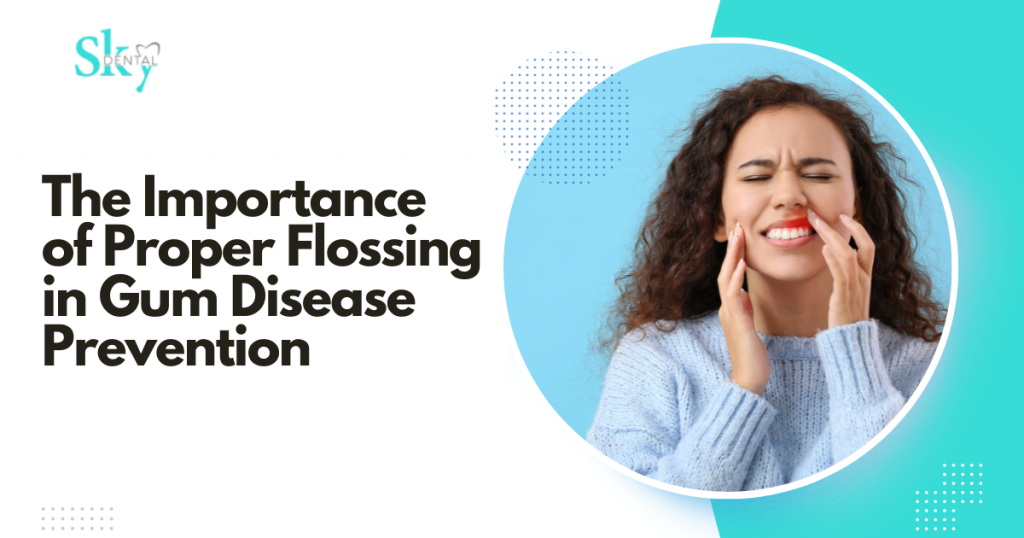Gum disease prevention, a prevalent oral health issue, can often go unnoticed until it reaches advanced stages. While brushing is a fundamental aspect of daily oral care, its counterpart, flossing, is equally crucial in preventing. In this article, we will delve into the significance of proper flossing and its role in the prevention.
The Silent Menace: Gum Disease Prevention
Periodontal disease, is an inflammatory condition affecting the tissues surrounding the teeth. It typically begins with gingivitis, characterized by red, swollen gums and occasional bleeding during brushing. Without intervention, gingivitis can progress into periodontitis, a more severe form of gum disease that can lead to tooth loss and other complications.
The Brushing Dilemma:
While brushing remains a cornerstone of oral hygiene, it often falls short in reaching the tight spaces between teeth and along the gumline. These are areas where harmful bacteria thrive and plaque accumulates, paving the way for gum disease prevention. Recognizing the limitations of brushing alone underscores the crucial role of flossing in maintaining optimal gum health.
Flossing as a Defense Mechanism:
Proper flossing acts as a formidable defense against by targeting the areas that a toothbrush cannot adequately reach. Dental floss is designed to slide between teeth, removing plaque and debris, thus preventing the formation of tartar—a hardened form of plaque that contributes to gum inflammation. By incorporating flossing into a daily oral care routine, individuals can significantly reduce the risk of developing.
How Flossing Works:
Flossing is more than just a matter of sliding a string between teeth. It involves a technique that ensures thorough cleaning and maximum effectiveness. Gently guide the floss between teeth, forming a C-shape around each tooth to reach below the gumline. This technique removes plaque and debris while stimulating the gums, promoting blood circulation and overall gum health.
The Link Between Flossing and Gum Health:
Numerous studies have highlighted the direct correlation between consistent flossing and a lower incidence. The removal of plaque and prevention of tartar buildup through flossing contribute significantly to maintaining the integrity of the gums. Additionally, healthy gums serve as a vital barrier against bacterial invasion, fortifying the overall oral defense against gum disease prevention.
In Conclusion:
In the battle against gum disease, flossing emerges as a potent weapon, complementing the efforts of regular brushing. The two together create a comprehensive oral care routine that addresses the diverse needs of maintaining healthy teeth and gums. By acknowledging the importance of proper flossing and incorporating it into daily practices, individuals can take a proactive stance in preventing and promoting lasting oral wellness.


